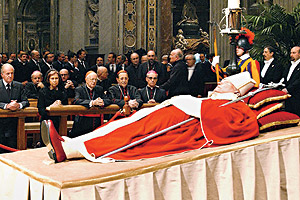Llacolen
Back in the times of governor Garcia Hurtado de Mendoza, in the south of the country the armed conflict between the mapuches and the Spanish was underway.
In the Concepcion area, where the San Pedro Chica lagoon is nowadays, lived Llancolen, a young beautiful mapuche who was the daughter of toqui (chief) Galvarino. The father thought the child had to get married, so he promised her hand in marriage to warrior Millantu, who had stood out for his bravery in several battles. So, even though Llancolen didn’t like the choice, she still followed her father’s will.
Everyday, Llancolen would bathe in the lagoon for long hours, and during one of these baths, she was seen by a handsome, brave Spanish captain. Shortly after, love sprung and grew between them. Back in those days, Garcia Hurtado de Mendoza had managed to capture Galvarino and he ordered the amputation of both of his hands to scare the rest of the indigenous people.
Once the torturous procedure was over, the toqui was sent free, but far from having learned a lesson, he soon returned to combat under the command of Caupolican. Alas, he was taken prisoner and hung alongside other warriors.
Young Llancolen was torn between hating the Spaniards or not. Amidst these doubts and the discouraging scenario around her, she decided to escape into the woods near the lagoon. The Spaniard followed her all the way there and tried to console her and convince her to run off with him.
Millantu had also trailed the young woman and when he saw her with the captain he was filled with jealousy and rage and so they fought in a fierce struggle. Neither of the men gave in and the bout only ended after both of them fell dead. In shock, Llancolen decided to take her own life and submerged herself in the waters of the lagoon. (Version based on Oreste Plath’s compilation).
The Three Pascualas
In a budding Concepcion there lived three girls named Pascuala who went to a lagoon to do laundry.
One afternoon, other women showed up to wash at the spot and found the dead bodies of the three Pascualas floating in the water.
The cause was allegedly, or so the story goes, that the three sisters had fallen in love with the same man; who seduced them, tricked them and then left them. So, the young girls agreed to put an end to their lives by flinging themselves into the lagoon. It is also said that when they did this, a whirlpool appeared in the lagoon, a tremor shook the bottom and the waters overflowed. When they returned to their banks, they had taken on the shape of a moon at the fourth wane. Moreover, locals say that on some nights they see the three Pascualas scrubbing.
Another version says an outsider had come to stay at the house the three lasses shared with their father. The man fell in love with all three girls and each of them, in secret, reciprocated that love. However, he was confused and didn’t know which of the three sisters he should pick. Therefore, he arranged a meeting with them at the lagoon on the night of San Juan.
At midnight, the young man was rowing in the lagoon while he was waiting for the women. He soon saw the reflection of the three Pascualas in the water. So, desperate, he began to yell: Pascuala! Pascuala! Pascuala! All three, upon hearing their name, thought they were the chosen one and began to enter the lagoon, where they met their demise.
Since then, it is said that on the nights of San Juan, at midnight, you can see a boat and hear a voice that desperately cries out to the girls. (Version based on Oreste Plath’s compilation).
Petronila Neira
The story goes that on October 21st, 1910, the body of Petronila Neira was found in the waters of Redonda lagoon (Concepcion).
She was a young seamstress from the area that had been murdered by several stabs and was thrown in the lagoon wrapped in a sack filled with stones.
A few days later, and despite the weight, the remains resurfaced, transforming this woman into a worshipped “popular saint”. In fact, her appearance on the surface of the lagoon was considered her first miracle.
Shortly after, people erected small shrines on the shore of the lagoon and devotion for the young woman began. They asked her for favors and made penitence. It is said that for a long time, Redonda lagoon was called Petronila Neira.
The pilgrimages were moved from the lagoon to the General Cemetery where Petronila was buried.
According to popular stories, every October 21st, things appear on her gravesite that, according to faith, belong to the people that made penitence for her and Petronila calls in the favors by taking some of their belongings. (Version based on the compilation of Oreste Plath and other researchers).
The Cuero (Leather)
It is also known as Cuero de Agua (Water Leather) or Manta del Diablo (Devil’s Blanket). It is an aquatic animal found in mapuche mythology and was later included in chilote tales as well. Legends say that this creature supposedly lives in numerous lakes, lagoons and rivers of Chile and Argentina and to a lesser extent, in the ocean. At these places, like the Chiloe archipelago, it is said that it mainly attacks animals.
It allegedly looks very similar to a large-sized piece of cow leather and it has appendages along its edges, like hooks. On one end of its body (where the head is believed to be), there are two tentacles that end in a couple of red, bug eyes. In the middle of the lower part of its body is the mouth, very similar to a huge sucker, which it uses to completely suck out its prey’s fluids until it is bone dry.
Its M.O. is to get close to a victim (animal or human) that is drinking or bathing in the water. This way, using its powers, it raises the water level and hypnotizes its prey. Then, it quickly wraps them up while holding them down with its claws and smothers them to death, all of this while dragging them to the bottom of the water where it devours them.
One way of fending it off is with the help of a machi. They attract the hell spawn with their powerful magic. When it is near, they trick the creature by throwing Magellan barberry branches at it. The Cuero, completely stunned by the machi’s magic by now, curls itself around the plant, taking it for a tasty victim. However, when it squeezes the bush hard, the thorns stab its body, tearing it apart and bleeding to death. (Version based on the compilation of Oreste Plath and other researchers).








